Synthesizing a theme song
Led by Bob Jani, the entertainment team at the under-construction Walt Disney World quickly got to work forming the soon-to-launch Electrical Water Pageant on the Seven Seas Lagoon. However, like any good parade, the nightly show needed music. And the song they discovered would go down in Disney Parks history.
For that, we have to rewind eight years or so. You have to imagine – for most of modern music-making history, “electronic music” was sonically experimental, technologically impractical, and enormously expensive.
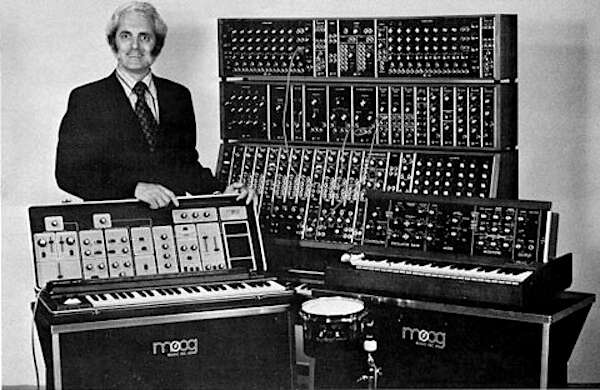
That changed in 1963 thanks to American engineer Robert Moog, who began work on what would become the Moog synthesizer. Moog’s compact, practical, and affordable synthesizer used voltage-controlled oscillators, amplifiers and filters (instead of early computer vacuum-tube systems) to modify envelope generators, noise generators, ring modulators, triggers, and mixers. And unlike synthesizers that had come before, its input was a musician-friendly musical keyboard!
The mid-60s, then, became an era of experimentation with the Moog synthesizer. For example, the 1968 album ‘Switched on Bach’ elevated electronic renditions of the legendary composer’s music to the top 10 of US mainstream music charts! Synthesizers were able to create sounds, patterns, and effects people had simply never heard before. The new frontier of electronic music drew pioneers in the art…

So even though Disney fans may not know the names of electronic musicians Jean-Jacques Perrey and Gershon Kingsley (as an act, Perrey and Kingsley), they know their work. 1967’s “Baroque Hoedown” was a Moog synthesizer masterpiece and a true experiment in the emerging realm of electronic music…
The duo used nuances and characteristics of the Baroque style, such as a pattering harpsichord with running lines accompanied by a basso continuo (a bass line that is consistent throughout the whole piece), and an ornamented cadence. They also added swung and syncopated rhythms to achieve the “hoedown” feel of a festive and celebratory dance. And thus, a legend was born.
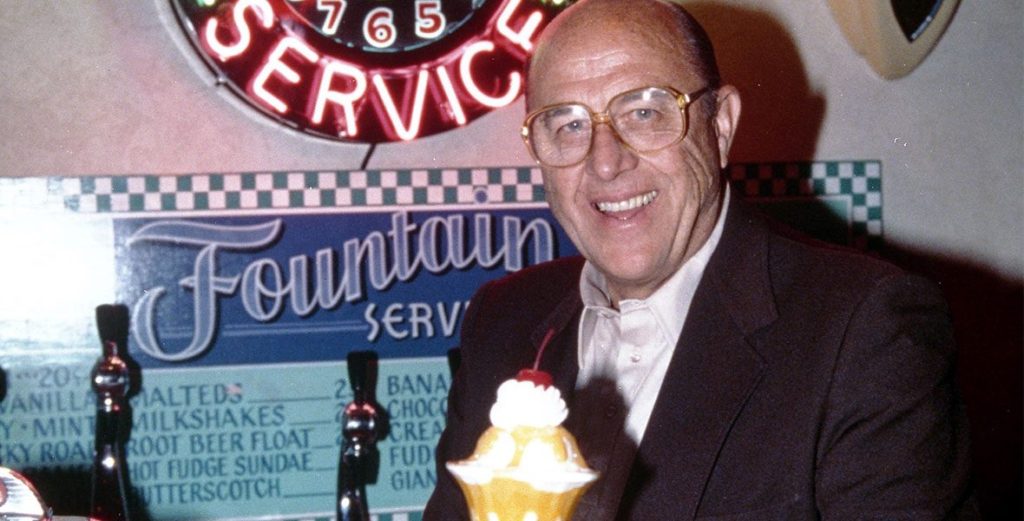
Speaking of which, as the story goes, it was Disney Legend Jack Wagner who discovered the tune. The beloved “Voice of Disneyland” himself, it’s been said that no other man’s voice has been heard over so many loudspeakers by so many people. Though Wagner is best known for producing nearly all of Disneyland’s in-park announcements from the 1970s to the ’90s (think, “Ladies and gentlemen, boys, and girls, in just fifteen minutes…”) as well as that announcement on the Walt Disney World Monorail, he also dabbled in music… Jack sold executives on the idea of an electronic song serving as a boon for in-park entertainment, leading Disney to license (and years later, outright purchase) “Baroque Hoedown.”
And frankly, it’s only appropriate that the legendary pioneer in electronic music became a staple of one of the most beloved experiences ever to grace Walt Disney World. On October 25, 1971 – on the official “Dedication Day” of of the resort – the Seven Seas Lagoon first served as the site of one of the Electrical Water Pageant.
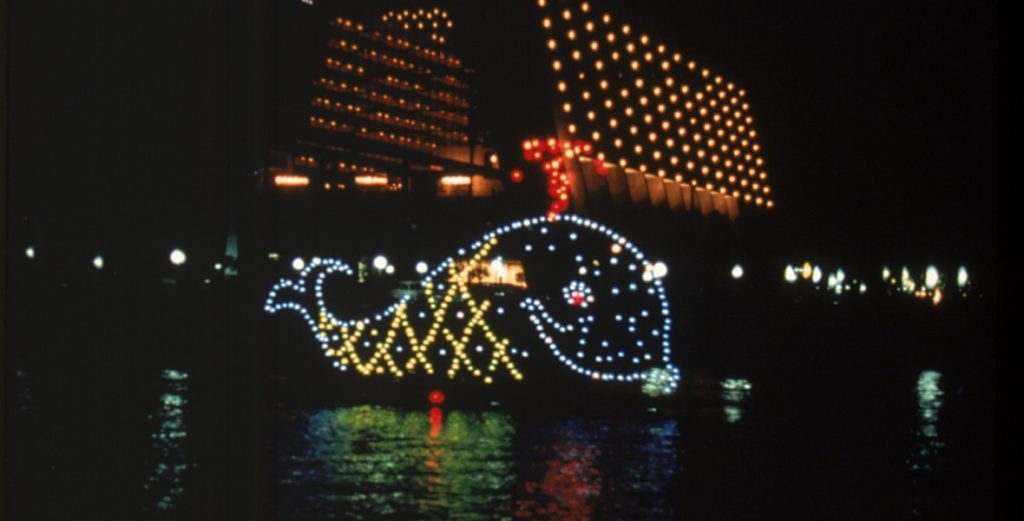
In Disney World’s opening years, the Water Pageant’s lineup consisted of some tried-and-true classics: an iconic sea serpent (made of three individual barges), a smiling whale, ball-balancing sea lions, a mermaid revealed in a clamshell, a “jumping” pod of dolphin (animated by way of three barges flashing on-and-off in sync), an octopus, and four seahorses pulling a carriage with Poseidon in tow… the 1,000 foot-long floating conga line was just the “kiss goodnight” that visitors to the Vacation Kingdom didn’t know they needed.

And of course, Perrey and Kingsley’s 1967 song served as the continuous cadence of the glowing flotilla’s procession. While Disney Parks fans would come to know a version of “Baroque Hoedown,” we’re not quite there yet… Park Lore supporters can listen along to this Passholder-exclusive audio stream above to hear how the Water Pageant original isn’t the version fans today recognize.
Still, between a glittering nighttime pageant of glowing lights and a joyous, energetic electronic score, our story of the Main Street Electrical Parade is certainly rolling… now to get the floats rolling, too.
Powering up
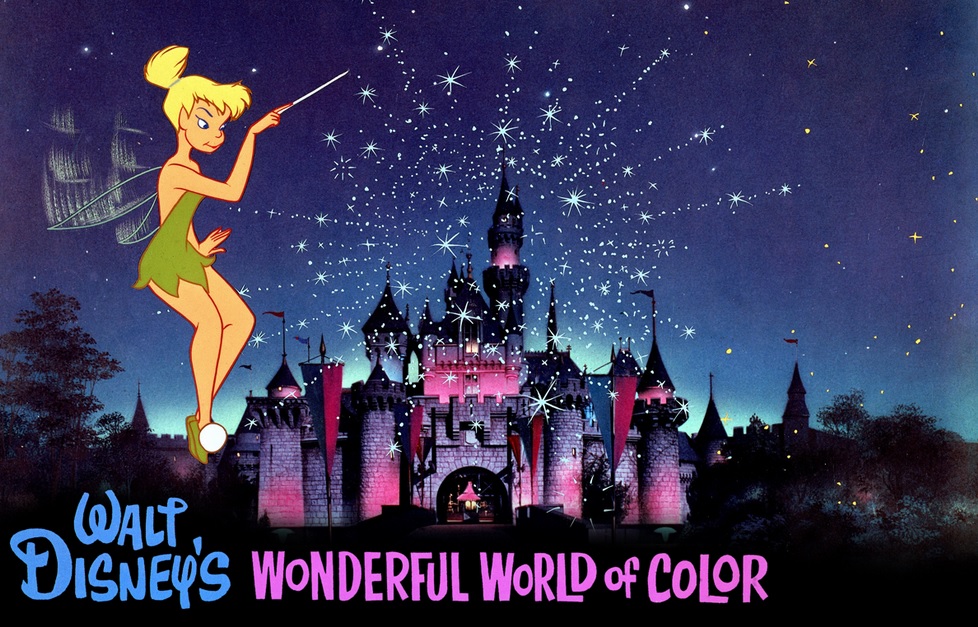
The Electrical Water Pageant – with its catchy “Baroque Hoedown” soundtrack blaring across the Seven Seas Lagoon – debuted alongside Walt Disney World in October 1971… In many ways, it marked the official completion of the initial phase of the Florida Project. It was (and remains) quintessentially “Vacation Kingdom, 1971.”
Meanwhile, back in California, things weren’t looking quite so celebrational. Still less than five years out from Walt Disney’s unexpected passing, the park had most surely begun its descent into the so-called “Dark Ages.” Disney World had monopolized time and resources, leaving Disneyland double-hurt by the decline in the company after Walt’s death.
Just as important, Bob Jani recalled, “We had an enormous morale problem. The employees at Disneyland felt like they were working for a second cousin after Walt Disney World opened.” Put simply, Walt’s original theme park was looking – and feeling – a bit left behind. Then-CEO Card Walker allegedly called on the recently-returned Disney World team to turn their attention back to Anaheim, and to come up with a concept that would give the park a morale boost… and ideally, revive the park’s after-dark energy to tap into dinnertime crowds.

Director of Show Development Ron Miziker (reporting directly to Bob Jani) began to toy with the concept of importing the Electrical Water Pageant from Florida. Allegedly inspired by stories of turn-of-the-century cities using illuminated parades wrapped in the brand new electric lightbulbs to draw visitors from rural regions, Miziker began to recraft Florida’s nighttime concept into a high-energy procession of sights, sounds, and dancers where Main Street itself would become the stage – an electrical parade.
Easier said that done…
Challenges
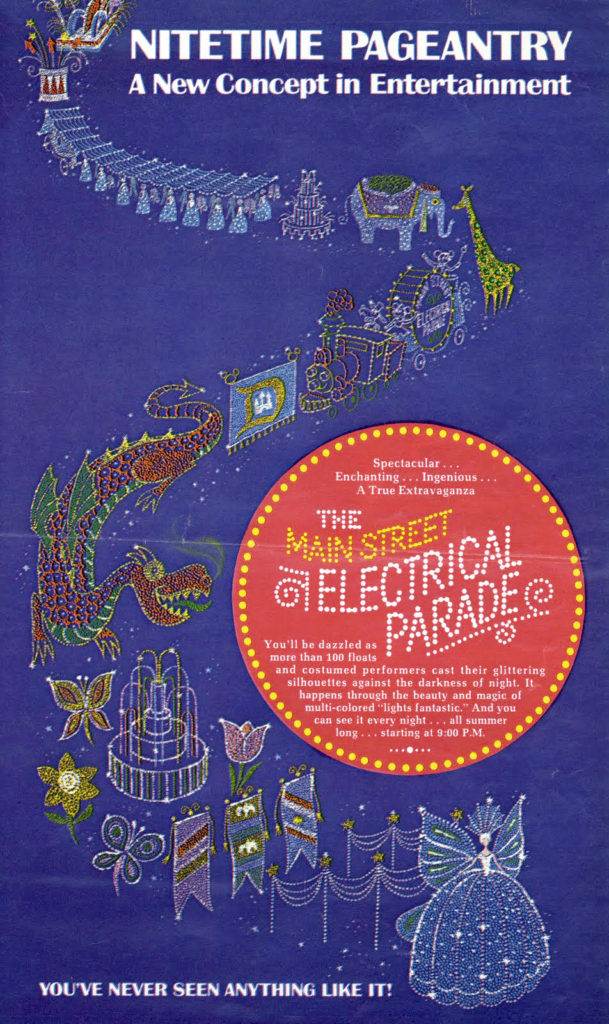
The Main Street Electrical Parade wouldn’t just be a must-see after-dark experience strong enough to keep guests in the park through dinnertime; it would also provide the park and its Cast with a much-needed “win.” Though the Electrical Parade would certainly borrow from the Water Pageant (not just in concept but, at Ron’s insistence, in using that original arrangement of “Baroque Hoedown” as its theme), it would also have some key differences… and limitless challenges….
Not the least of which being that Ron Miziker and Bob Jani had commited to an almost unthinkable timeline for fabricating, installing, and testing the parade. In fact, by time a team had officially formed for the Main Street Electrical Parade project in January 1972, the show’s debut was practically in sight. The project would have one of the tightest turnarounds ever attempted in Disney Imagineering: from sketch to reality in just six months, with a planned premiere in June 1972.
That left Disney Imagineers with startlingly little time to answer some of the most challenging questions they’d ever faced…
Challenge 1: POWER
How exactly would Disney manage to pull the power needed to not only pilot the parade’s floats, but to keep them illuminated from start to finish?
The Water Pageant at Walt Disney World had been powered by generators on each barge. However, gas-guzzling, loud, vibrating generators spewing fume clouds would never work in a parade with guests less than a dozen feet away. Even car batteries, it was concluded, just didn’t have the power needed to supply each float with motion and light.
“We even considered electrifying the tracks along Main Street,” Miziker told the San Diego Union-Tribune.
Luckily, the solution came via the Studio, which had recently switched to sintered-plate Nickel-Cadmium batteries to power mobile stage lighting and camera rigs. Imagineers calculated that Ni-Cd rechargeable batteries could hold enough energy to power and move each float the full, 2,000 foot length of the parade route at Disneyland (from “it’s a small world” to Town Square), recharging behind Main Street before making a second showing of the return trip to Fantasyland.
Challenge 2: MUSIC
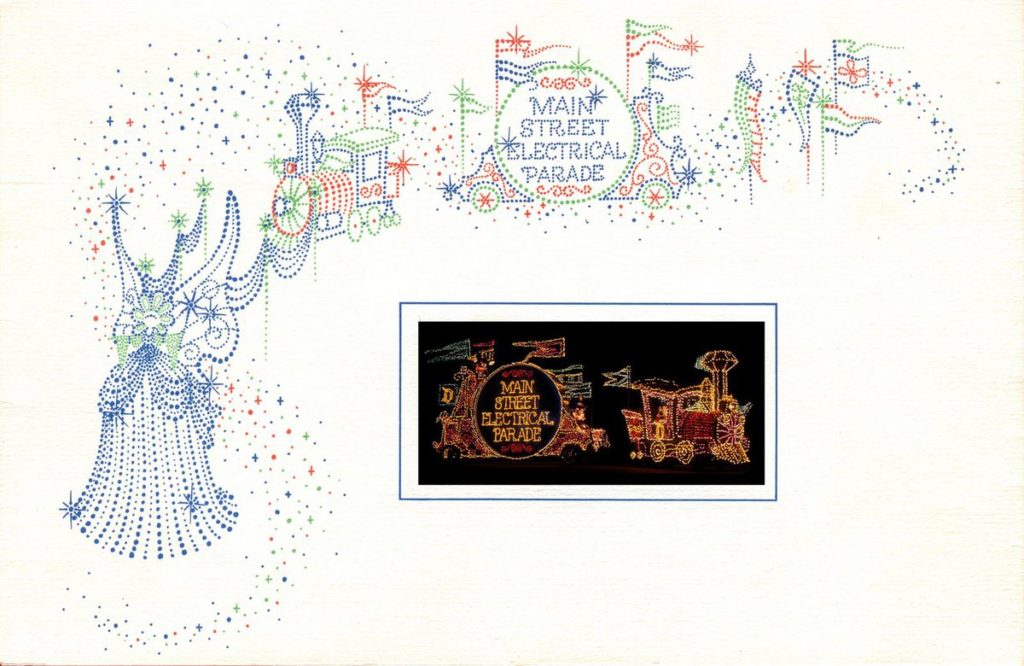
Naturally, music had always been a key element of Disney parades… but never before had a soundtrack been so integral to a procession down Main Street. Not only was the “Baroque Hoedown” an essential part of the show; it would also be a cause for an enormous innovation in Disneyland Entertainment. While prior parades had featured a single looped audio track continuously piped along the parade route, the parade’s director and choreographer Barnette Ricci wanted the Baroque Hoedown theme to interweave with classic Disney songs specific to each float, requiring a new invention.
Here, Disney’s solution was revolutionary. Each float of the Main Street Electrical Parade would be equipped with its own radio-transmitter, while the 2,000 foot-long parade route itself would be divided into “trigger zones” of around 100 feet long. As the parade progressed down the route, each float would wirelessly communicate with a first-of-its-kind automated show control system, which would in turn synchronize that particular “trigger zone” to play the audio of that specific float.
As Ricci had hoped, this would allow designers and audio engineers to weave the themes of Pinocchio, Alice in Wonderland, and Cinderella into the “Baroque Hoedown,” with each float’s particular take on the score “following” it down the route while a common shared theme and precise looping ensured that the audio never fell out of sync or stuttered.
Challenge 3: LIGHTS
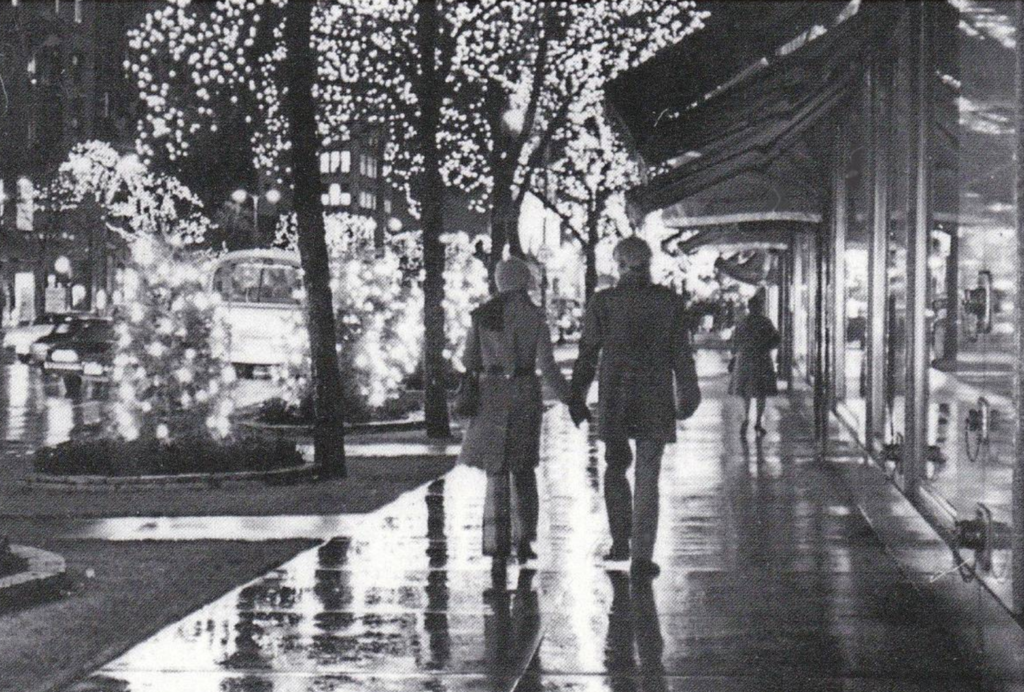
There’s no question that the tight turnaround on the Main Street Electrical Parade had to have been the project’s biggest hurdle… and it goes without saying that nothing could be more important to the parade than its lights. Luckily, Disney had an ace in the hole: the Silvestri Light Company of Chicago, Illinois. Each year, Silvestri had singlehandedly staged one of the most well-known Christmas light demonstrations in the country: the complete illumination of Chicago’s Michigan Ave.
Back in the ’60s and ’70s, Christmas lights were typically quite large, with thumb-sized bulbs of blue, green, pink, and yellow. But Silvestri used tiny, clear bulbs that could intricately wrap around tree trunks, down their limbs, and to the finest tips of their branches. The precise and exacting practice created the illusion of trees made of tiny points of white light – practically a prerequisite for wrapping Disney’s wire frames for the new Electrical Parade! Miziker and Jani traveled to Chicago together, where Silvestri agreed to both supply the bulbs and build the floats despite the short turnaround.
In March 1972, construction began on the floats. Then… things got messy. Read on…



